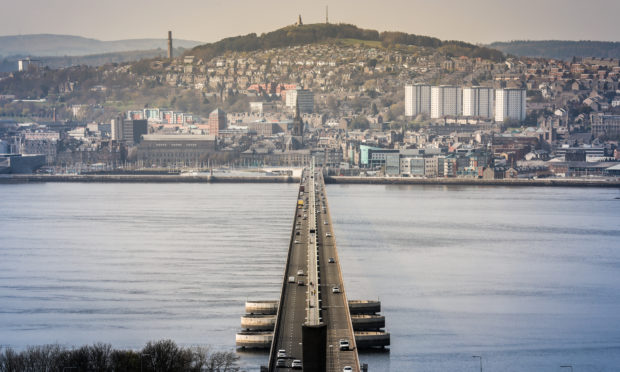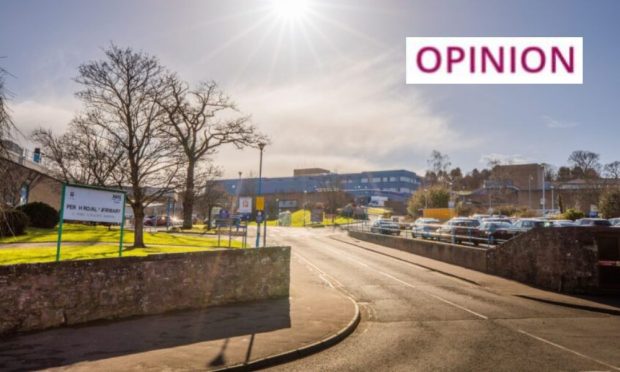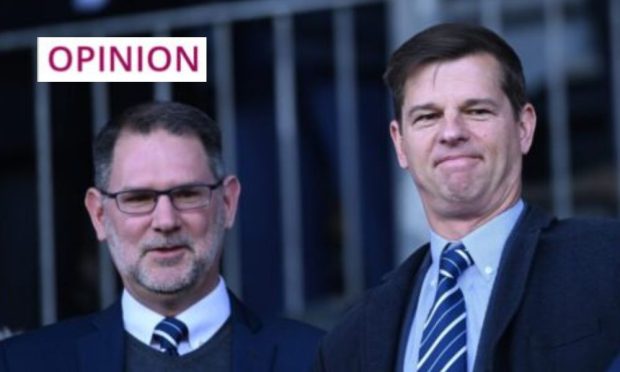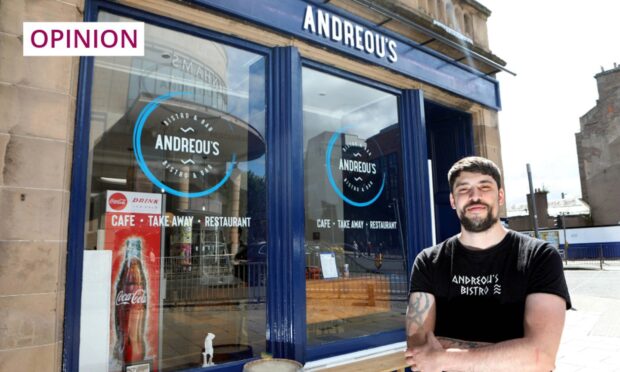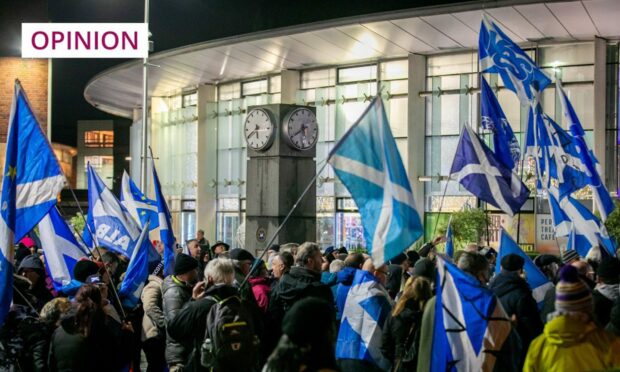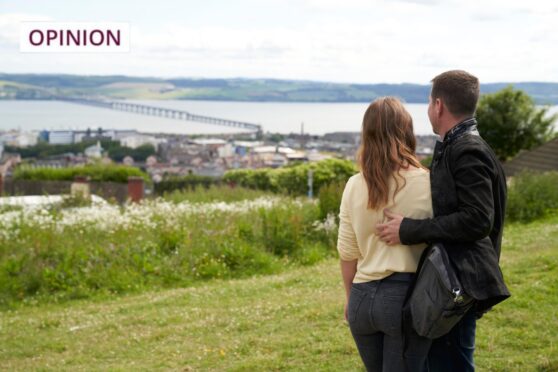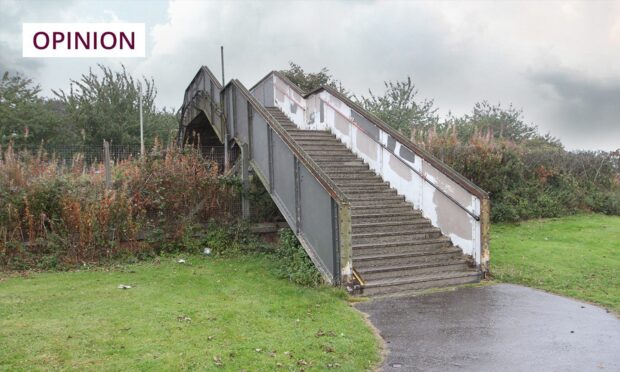Madam, – It was encouraging to read recently that Dundee’s economic development convener is exploring Park & Choose options on the Fife side of the Tay Road Bridge.
It does, however, raise the question of developing such facilities to the north, east and west of the city.
Is there no need? Is it a sites problem?
Aberdeen has recently opened its bypass which, by all accounts, has reduced commuting delays as well as city centre traffic.
What has happened to the outer Dundee bypass, identified nearly 40 years ago by Tayside Regional Council?
Is there really no need for it – particularly with the huge residential expansion to the east of the city?
The Tactran Strategy 2008-2023 identifies multi-modal interchanges as a priority and Perth, using Tay Cities Deal money, plans an integrated bus/rail interchange.
Why is there no such plan for Dundee?
The new waterfront developments including the V&A will bring more workers, residents and visitors to this part of the city over the next 10 years.
The railway station now has a new entrance but the bus station is at the other end of the city – and there is no connecting hub between city and rural / intercity buses.
Surely there is the opportunity to create a new integrated bus station at Site 5 opposite the railway station – perhaps as part of a mixed office/residential/retail development?
Finally, the airport has no public transport connections.
Albeit there are only two flights in and out on weekdays at present might it be possible to reroute a few of the existing bus services to suit the flights?
The city council seeks to minimise the use of cars – promoting cycling, low emission zones and possibly workplace parking.
Other cities, including Glasgow just recently, have produced forward thinking integrated transport strategies.
Dundee needs to demonstrate that it can develop such a strategy and in particular how it will encourage us all to leave the car behind and move to public transport.
Hugh Macrae.
Binrock, 456 Perth Road, Dundee.
Opening debate on trans issues
Madam, – I note the timing of Councillor Gregor Murray’s resignation from the SNP, the day before the Standards Commissioner suspended him for his abusive and insulting comments towards women.
Gregor Murray’s pre-emptive outburst took no responsibility for his own actions and sought to blame others.
He also made a serious allegation that I invited far right hate groups into parliament.
This is completely untrue and is simply another ploy to shut women up.
My committee took evidence from women, including a leading human rights professor, concerned the census should continue to record biological sex because we need reliable data to plan services such as health.
Gregor Murray thinks that is transphobic.
Most people, including statisticians, think it is common sense.
Women verbally attacked by Gregor Murray, including myself, respect everyone’s human rights including those of people who identify as trans.
However we question the proposals to allow any male to declare himself female or indeed “non binary”, without any medical / psychological checks or safeguarding and without making physical changes to their bodies.
This “gender self identification” makes it difficult to enforce women’s legal right to single sex spaces, such as changing rooms, sleeping accommodation and intimate services such as personal care for the elderly and disabled or support groups for traumatised women.
It takes a coach and horses through the principle of “consent”.
Accepting men as women in every respect is also disastrous for female sport. Women raising these concerns are not transphobic – and they certainly don’t deserve the unprovoked abuse directed at them by the now suspended councillor.
Joan McAlpine.
SNP MSP, South of Scotland Region.
Drystone dyking not a dying art
Madam, – I refer to your article “Fife farmer under fire for removing drystone dykes” (Courier, May 14).
Firstly it surprises me that a farmer should be unaware that drystone dykes are protected in Scotland and cannot be removed without ministerial consent.
Not only are they havens for wildlife but they are part of the historic landscape which the Dry Stone Walling Association of Great Britain (DSWA) has been promoting and trying to protect for 50 years.
Visitors to the Scottish countryside expect to see these iconic features in the landscape and be under official protection.
The fact that nearly two centuries worth of historic and cultural heritage has been destroyed a concern.
Our association is running a project across the UK, as part of Skills for the Future, to train young wallers to learn the craft of drystone dyking.
Last weekend eight of them successfully passed their Level 2 walling test after working for a year with professional wallers and dykers. They are now advancing the craft to a new generation.
Far from being a dying craft, there is plenty of work in the countryside, as well as in gardens, for these young people.
The DSWA has recently formed a new branch of young wallers who want to help maintain these walls and dykes and need them to practise their craft.
This particular incident gives out the wrong signals.
We must value our own heritage and encourage young people that there is a worthwhile career to be had in countryside activities such as drystone dyking.
Richard Love.
Chairman of the Craft Skills Group,
DSWA-GB, Edinburgh.
Argument for union is illogical
Madam, – I am struggling to understand Scotland in Union’s Jill Stephenson’s logic (An anaemic performance, Courier, May 10).
Using an “anaemic” Scottish economy, run from London, as an argument against independence is perverse.
Focusing initially on the performance of our North Sea oil assets even more so, coming as it did in a week when Norway’s $1.1 trillion oil fund earned more in three months than the entire annual Scottish budget sent from Westminster.
Quite why the continuation of the current arrangement between an allegedly poor Scotland and England is deemed so important that Scots are to be denied by London the opportunity to even discuss alternatives may be gauged by two recent statements.
Firstly, the Daily Telegraph’s economic correspondent, Andy Critchlow, wrote, “Think what the UK would be like without the vast wealth generated by the equivalent of 44bn barrels of oil pumped from British (sic) territory over the last 40 years.”
Secondly, Dr Sune Auken, University of Copenhagen, opined, “As a Dane watching Britain, it seems that if you transferred most of our government functions to London we would very soon be too poor for anything, because that’s, apparently, what being governed from London does to you.”
Scots aren’t the only people to have experienced this truism, but post-independence we will hopefully be the last.
Ken Clark.
c/o 15 Thorter Way,
Dundee.
